The Nothing Ear and Ear (a) earbuds are tempting me to switch from AirPods
Content is created by CNN Underscored’s team of editors who work independently from the CNN newsroom. When you buy through links on our site, CNN and its syndication partners may earn a commission. Learn more
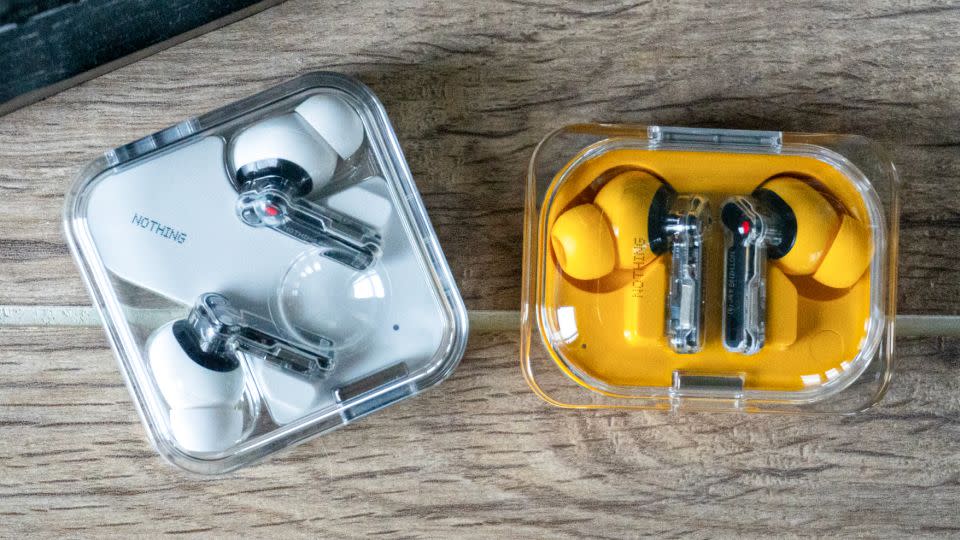
Over the past couple of years, Nothing has found itself in an interesting place. A company founded by ex-OnePlus founder Carl Pei, the London-based startup was quick to put out a few phones to prove its design and marketing prowess against the big dogs, and they were met with solid reviews — including from us on the Nothing Phone (2). But Nothing has found particular success in its headphones, where the company seems to have a knack for not just offering something different, but something incredibly good for an incredibly good price.
And once again, the brand has done just that.
With Ear (a spiritual successor to the Ear (2) and the budget-oriented Ear (a), Nothing is offering well-rounded wireless earbuds with great sound quality, noise cancellation and battery life for prices that undercut many of the best wireless earbuds they’re competing with. At $149, the Nothing Ear headphones are a steal, while the $99 Ear (a) are an even more riveting bargain.
I’ve been using both pairs for the past week, and the thing I keep coming back to is how little I miss my more expensive earbuds. Spoiler alert: When I wore my Nothing buds to jam out to music while writing this review, I had no inclination to switch back to my AirPods. These buds stand out on their own not just for looking good, but sounding good, too.
But the question is: should you consider picking up a pair for yourself? Let’s find out.
Nothing Ear (2)
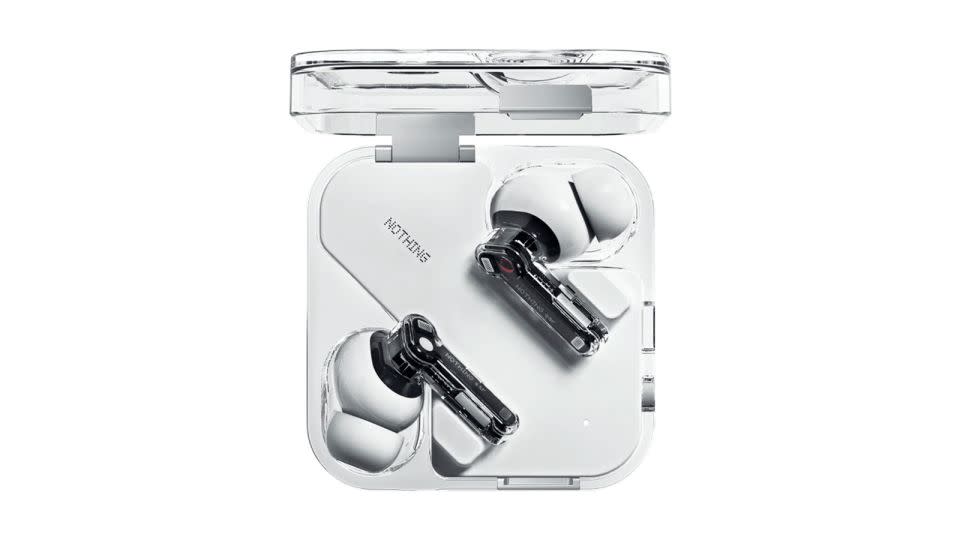
Nothing’s latest earbuds offer a modern transparent design, solid sound quality, and ANC that easily rivals some of the best earbuds on the market, all for a cheaper price.
Nothing Ear (a)
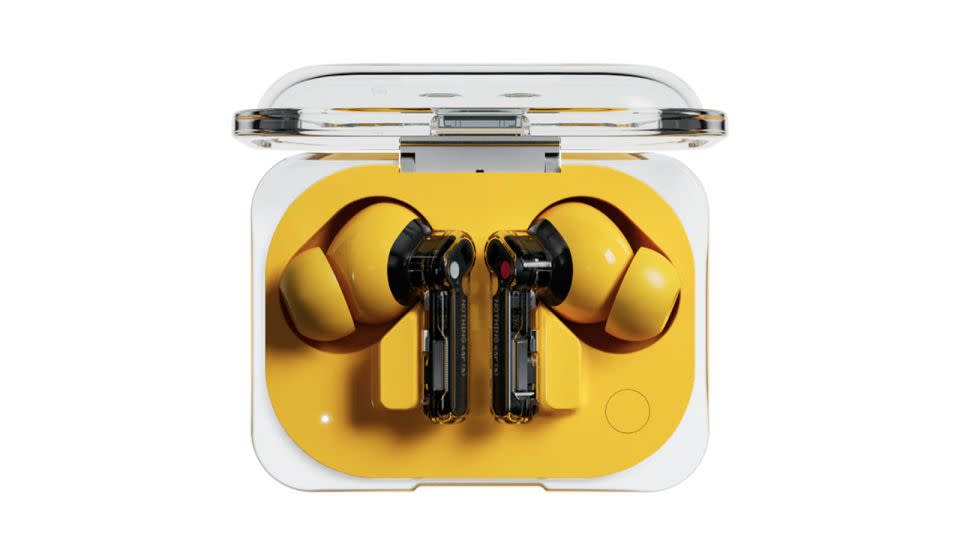
Nothing’s latest earbuds offer a modern transparent design, solid sound quality, and ANC that easily rivals some of the best earbuds on the market, all for a cheaper price.
What we like about them
Truly unique design
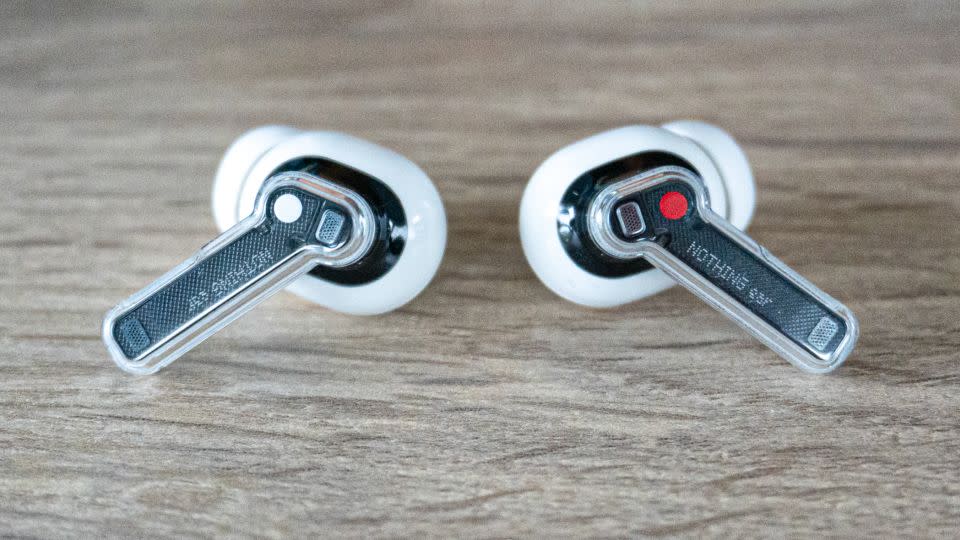
Nothing’s design language consists of a lot of transparency, and the Ear and Ear (a) show it off well. These are some of the most unique earbuds on the market, with semi-transparent buds and corresponding cases that look both retro and modern at the same time. Amidst a sea of wireless earbuds that look more or less the same, I really dig what Nothing has done.
The Ear come in black and white models, while the Ear (a) come in black, white and a bold yellow finish. Nothing was very excited about yellow during my call with the company, and it’s pretty clear why — it’s certainly a statement. I’ll admit, I’m not the first guy to reach for the yellow ones when I’m out shopping for earbuds, and they give off a heavy DeWalt vibe that I wasn’t expecting. Still, the color helps the Ear (a) stand out and further play into Nothing’s unique design philosophies.
If you’re experiencing déjà vu looking at these headphones, you’re not the only one. The regular Ear share the same fundamental design as the Ear (2) from last year, save for a few tweaks to the case and a slightly rounder eartip. There have been numerous times during my testing that I picked up the Ear (2) instead of the Ear, so I’ve relied a lot on looking for the Nothing logo printed on the Ear’s case that replaces “ear (case)” on the previous model.
Meanwhile, the Ear (a) couldn’t be any easier to identify from a mile away. Not only are they yellow, but the case is stubbier than the Ear’s case, which makes them a bit more pocketable while on the go.
The stems on the buds make them look a bit like futuristic AirPods, although they’re less pronounced thanks to the transparent plastic. You still get touch/pinch controls for controlling things like playback and volume, and they work really well on both.
Comfortable for everything, from casual listening to working out
Slot the buds into your ears and you’ll notice how good they feel. They’re extremely comfortable to wear for long periods, and they refuse to slip out of my ears even if I’m chewing gum and humming the words to my favorite song. The extra eartips in the box are great if the default tips don’t fit you, but I stuck with the pre-installed ones and they worked fine. There’s also a eartip test you can take in the earbuds’ companion app to determine which ones fit your ears the best for optimal sound quality.
Both the Ear and Ear (a) offer IP52 certifications so they’re safe against rain or sweat when you’re working out. Speaking of which, you can absolutely work out while using the Ear or Ear (a), and they’ll stay in your ears the entire time. I’d just be a bit more careful with intense cardio routines since there’s no hooking mechanism to latch them in.
Solid sound quality with good ANC

So, how’s the sound quality? Turns out, it’s really good, and not just on the more expensive buds.
With the Ear (a), Nothing delivers a balanced sound profile that offers good detail in the highs and mids, while still underlining everything with punchy bass. The Ear (a) use 11mm dynamic drivers with a dual-chamber design that gives them more room for the sound to breathe, as well as better ventilation, which translates to clearer sound quality. Compared to the Ear (2) from last year, audio feels a lot more spacious.
Meanwhile, the Ear also use custom 11mm drivers but use higher-quality materials inside for improving audio quality. For example, there’s a ceramic diaphragm jammed in each bud that, combined with the extra vents, creates a soundstage equally as balanced as Ear (a) but offers less pitchy highs and mids, giving everything you listen to a higher-definition sound. Nothing Ear are my favorite to listen to because of that, but it’s a close call.
I listened to a lot of music with these buds, from country music artist ERNEST’s latest album to Beach Weather’s “Pineapple Sunrise” to my dinner jazz playlist on Spotify. Through it all, the Ear and Ear (a) earbuds sounded great. Quickly switching between the two, I could tell that the Ear sounded a bit fuller and more defined than Ear (a), but in a vacuum, I think anyone would be satisfied with their audio quality. Compared to Ear (2), my AirPods and my Pixel Buds Pro, I prefer Nothing’s tuning far more often than I thought; not only are highs and mids slightly more pronounced, the whole listening experience feels more airy, which you don’t realize you want until you hear it.
With both pairs of earbuds, Nothing gives you a new feature called Bass Enhance that can enhance the clarity of lower frequencies by using a special algorithm. It comes enabled out of the box with the option to turn it off. I tested both pairs of buds with the feature turned on and off, and I’m in the camp that enjoys keeping it on all the time, if only for the extra punch when I crank up some hip-hop at the gym.
Notably, spatial audio isn’t supported on these buds, and let me tell you — I do not care. I have yet to be impressed with spatial audio on any headphones, let alone earbuds, so it’s completely fine that Nothing left it on the cutting room floor.
What isn’t cut out is active noise cancellation, which works well on both the Ear and Ear (a). I’m not gonna sit here and tell you that it’s the best ANC I’ve ever heard, but it’s definitely up there. Noise is blocked out really well and you never feel any uncomfortable pressure from it. Nothing includes its new Smart ANC algorithm that dynamically adjusts how much noise is filtered out depending on the seal of your earbuds and your surroundings, and I’ve found that it works really well. If the buds aren’t sitting as tightly as they could in my ears, ANC will ramp up a bit to accommodate. It’s not the same as automatically adjusting the intensity of ANC (that’s a separate feature called Adaptive ANC). Instead, it’s more a complimentary feature to adjust the quality of ANC, and that’s really helpful.
Speaking of which, Adaptive ANC also works well. Transitioning from my quiet house where ANC was set to low, to having it ramp up to high when I walk outside on my breezy porch is nice. Nothing says the Ear and Ear (a) can silence up to 45dB of external noise, which is pretty strong. It puts them in the same ballpark as the AirPods Pro, but not quite the high-end Bose QuietComfort Ultra.
Nothing Ear gives you pro-level features and performance
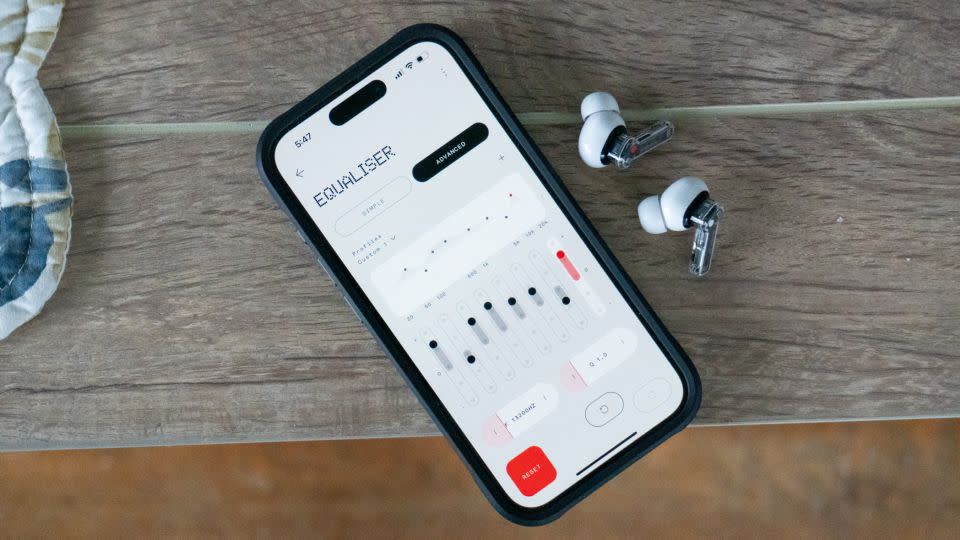
There’s a lot of similarities between the Ear and Ear (a), but Nothing does draw a line between them with some unique features you’ll only find on the former, making the Ear the clear choice for “pros.”
For instance, while you can stream hi-fi audio with the Ear (a), you’ll get even higher fidelity audio with the Ear since it supports both the LDAC and LDHC codecs, the latter of which offers broader bandwidth for crispy sound. The Ear also get an Advanced Equalizer in the app that gives you more granular control over how your music sounds, as well as personalized sound profiles from the Ear (2).
The Ear (a), by comparison, are more tuned for those who simply want earbuds that sound good and don’t need a ton of work. Of course, you still get some EQ controls, but nothing as advanced as what the Ear get.
This makes spending the extra $50 for the Ear a bit more feasible. Combined with their better audio quality, this feature set will prove to be worth it for a lot of buyers, including myself. But if you don’t need all that fancy stuff, you can stick with the Ear (a) and be perfectly happy.
All the “smarts” you’d expect
Both the Ear and Ear (a) come with all the smart features you’d expect. On Android, they work with Google Fast Pair, while Windows users are treated to Microsoft Swift Pair. (There’s no fast pair option for iOS users, unfortunately.) They also come with dual connection support so you can pair them to two devices at once, Clear Voice Technology for improved microphone quality, a Low Lag Mode for reducing latency while gaming and smart in-ear detection to play/pause your music.
There’s also another feature on its way that may be the smartest of them all: ChatGPT integration. Nothing has confirmed that you’ll be able to use OpenAI’s chat bot using voice commands through your Ear headphones or Nothing-branded smartphone, although I wasn’t able to test this feature during my review.
The Nothing X app is great
I’ve been talking a lot about the Nothing X app throughout this review, so I thought I’d just take a second to let you all know that it’s a delightful app to use. It’s chock-full of Nothing’s design language, smooth animations and easy access to all the controls you need for your earbuds.
It also simplifies the pairing process: fire up the app, open your earbuds’ case, and they’ll show up ready to pair.
What we don’t like about them
Battery life suffers with ANC, and only one model gets wireless charging
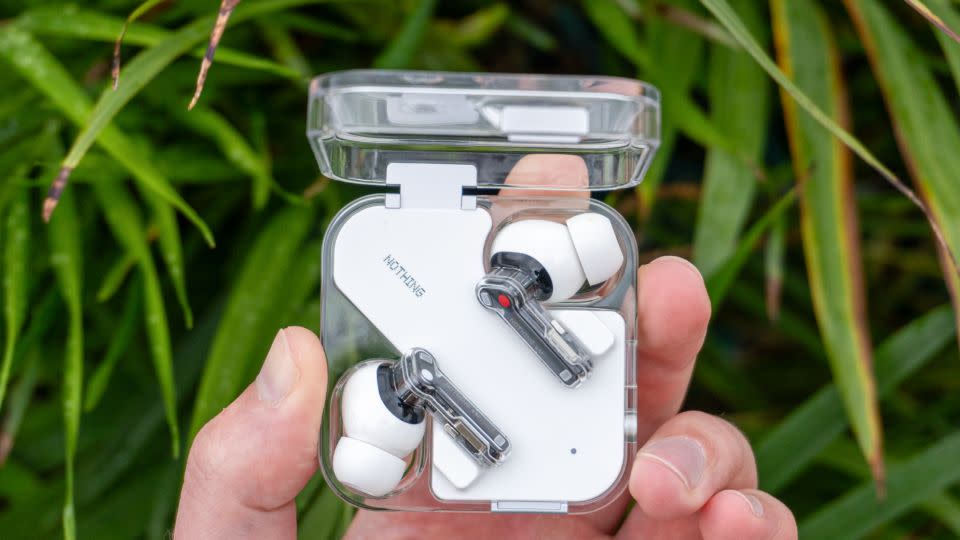
Nothing says Ear gets you up to 5.2 hours of playback with ANC on and 8.5 hours with it off. With Ear (a), that number jumps to 5.5 hours and 9.5 hours, respectively. In addition, the Ear’s case can supply up to 40.5 hours of battery life, while the Ear (a) case sits at 42.5 hours.
In real-world usage, however, those numbers are considerably lower. Using Ear, I was able to get about four hours of usage while using ANC and about 6.5 hours with it turned off. With the Ear (a), I could get close to five hours with ANC on and about seven hours with ANC off.
These aren’t the best numbers in the world by any means. The Pixel Buds Pro, for example, can easily last seven hours with ANC on the entire time. Heck, even my AirPods Pro (2nd-generation) will get me through at least five hours of listening with ANC.
The numbers drop when you use dual connection, too. I noticed I could get about 45 minutes less time listening when the Ear or Ear (a) were paired to a second device, which was really unfortunate. Battery life wasn’t a strong suit of the Ear (2) last year, and that downside has unfortunately carried over.
You’ve got USB-C ports on the back of both pairs of buds for recharging, while the Ear is the only one that gets wireless charging. Granted, it’s easy to forgive the Ear (a) for not offering Qi charging since they cost $100, but it’s still a bit of a bummer since the feature would’ve definitely made them a killer bargain.
Transparency mode needs some work…
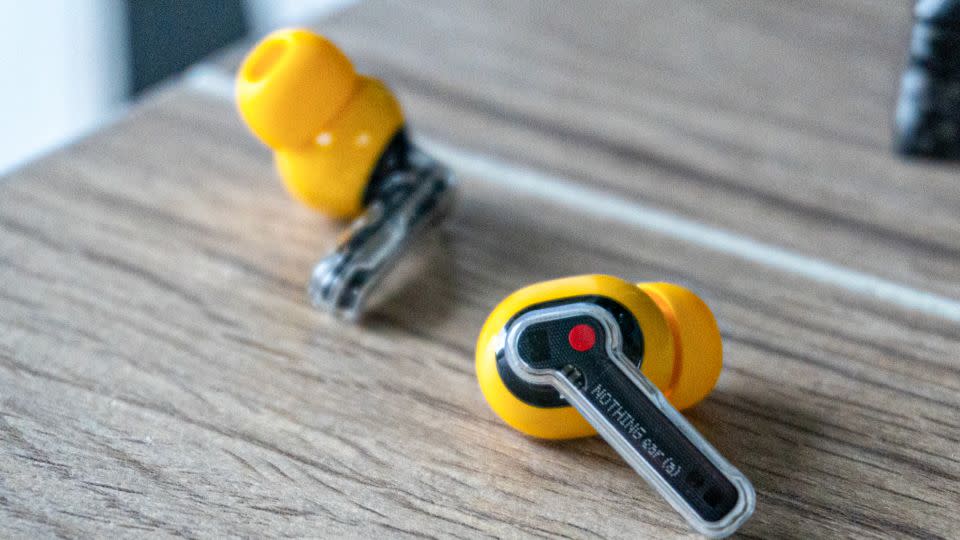
I use transparency mode a lot when I’m wearing headphones because I usually have them on all day long and it’s more convenient to switch to transparency to talk to someone instead of taking them off. But when I wear the Ear or Ear (a), I’m better off taking them out of my ears because of how underwhelming the feature is.
Long-press the stem of the buds and you’ll go from noise cancellation to… basically nothing. It switches to transparency mode, but it sounds like you just have earbuds in, not like the sounds around you are being amplified by the mics. Compared to my AirPods Pro, it’s a night and day difference. I wouldn’t even attempt using transparency mode at some place like a coffee shop or grocery store — everything will sound really muffled.
…probably because of these mics
A big part of why I think transparency mode doesn’t work well is due to the microphones. Nothing includes a triple-mic array on each pair of earbuds, but not even the Clear Voice Technology is enough to make them all that good.
I made a handful of phone calls with people and they all mentioned that my voice sounded muffled while using the Ear and Ear (a). I also recorded my voice using the microphones and noticed that it sounded pretty wet and filtered. By no means are they terrible microphones, but I think they could use some work.
Bottom line
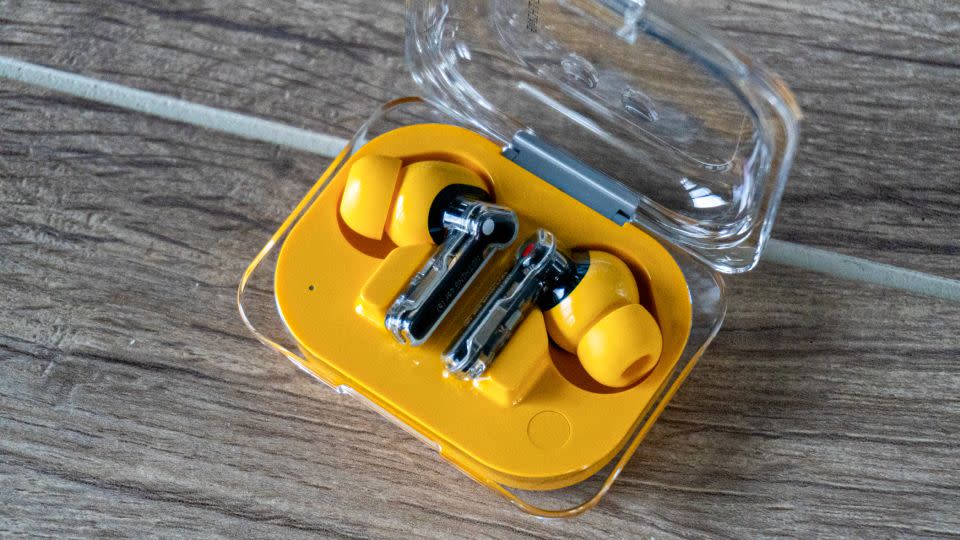
For $100 to $150, the Nothing Ear (a) and Ear are well-rounded wireless earbuds that offer a bang for your buck. With solid audio quality, a comfortable, unique design and a killer companion app, it’s hard to ignore how good these things are.
If you can live with the limited battery life and don’t use transparency mode a lot, it’s worth picking these up. Regardless of which pair you settle on, you’ll get a great set of earbuds that’ll last you a long time — and save you some money over the competition.
Note: The prices above reflect the retailers' listed price at the time of publication.
For more CNN news and newsletters create an account at CNN.com

